Goalie Leg Pad Buying Guide: How to Choose Leg Pads
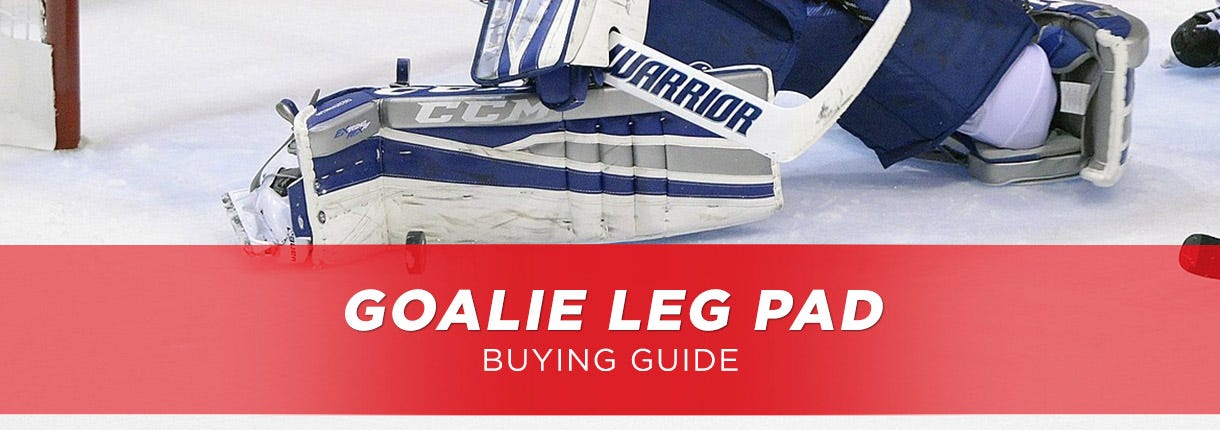
Which size pads should I use?
There are 4 different groups of sizing for goalie pads. Youth is the smallest of the four, targeting smaller, younger goalies and beginning goalies. The level of protection is proportional to their level of play. Junior sizing is geared for the next age range between 6 and 10 years old. These pads tend to run a little bit wider to compensate for the taller age range, offer a slightly higher range of protection and have can have better durability due to the higher quality of materials. Intermediate sizing caters to goalies between 11 and 13 years old. This gear tends to be offered in 2 levels of protection to give goaltenders an option in price and quality suited for their level of play. The gear is also wider than Youth and Junior, which is now proportional to the height of the older goalie. Senior level of gear offers the widest ranges in protection, quality and price. This gear is now at the full 11” wide legal limit and is for age ranges 13 through adult. With all of the ranges of protection, this allows goaltenders to find the pad best suited for the needs and has more options for colors and custom.
Depending on the level of hockey you are playing would determine if you should use senior or pro. Also, if you are looking for custom colors or modifications, those options are generally not available on senior level pads. The level and frequency of play would also determine the proper equipment. For example, if you are playing between 1-4 days a week, senior range equipment may be suitable. Or if you playing between 3-7 days a week, pro equipment might be more suitable.
Leg pads should be able to move well with the goalie in accordance with their preferences. Knee sizing is the most important part due to the nature of the pads rotating and with the popular butterfly position. Generally, the pads should not hinder any sort of skating or crease movements due to them being too large.
Sizing Goalie Leg Pads
For sizing leg pads, the best method is to try on a new set of leg pads with skates, goal pants and knee pads if the goalie prefers them. If a goalie cannot make it to one of our MonkeySports Superstores, I would suggest to use your Ankle to Knee Measurement (ATK) and multiply it by 2 to find your overall pad size. While sitting, a goalie should measure from the outside of their ankle bone to the middle front of their knee cap. For example, if a goalie measures their ATK and it comes to 17.5”they should fit well in a 35” overall pad. This number can be relative to what the goalie is currently wearing, the additional thigh rise of their preference, volume of pants in the butterfly and how tight/loose the goalie like to wear their pads.
The thigh rise addition is the extra amount of inches added onto the top portion of the pad. The stock size of the thigh rise is different per manufacturer and the plus sizing is dependent upon the goalies size and preference. A larger thigh rise is not always necessarily better. Sometimes a larger thigh rise can close the five-hole a little bit better but it can always effect a goalies recovery time and technique, skating and even shooting the puck.
Goaltending Styles
Most goalies today find themselves using the butterfly style and positioning but find certain classes within that style. The butterfly style was introduced for the goalie to build a wall along the ice to cover more gaps and reduce the risk of pucks coming through the body. This position has evolved over the years and has grown from a strictly blocking “Quebec” style butterfly goalie, but to a more athletically based “battlefly” goalie. Certain pads are dedicated to helping these styles but they are not limited in this fashion. A hybrid styled goalie will find themselves standing up more in their stance and not dropping down as often as a butterfly goalie would. Generally, hybrid styled pads tend to be softer and still have knee rolls. With these softer features the pads are able to mold to really be able to do whatever it is needed for a hybrid goalie to make a save. Also, hybrid styled pads tends to have a softer face to keep rebounds in tight for faster whistles. Butterfly oriented pads are actually a bit stiffer and can be flatter. Sometimes, the harder and stiffer pads tend to be squarer and might only lock a goaltender into a certain movement. These pads are also stiffer on the face and could rebound pucks harder and faster away from the goaltender.
Goal Pad Styles
There are two main styles of pads; flat faced and knee rolled pads. Knee rolled pads have 3 pronounced rolls running horizontally across the face of the pads. These rolls generally aid in torsional flex of the pad and also tend to create an overall softer feel in the pads. Flat faced pads do not have any pronounced rolls running across the face and help in creating more predictable rebounds. Flat faced pads tend to be an overall stiffer pad because of the removal of knee rolls.
How to Strap Goalie Leg Pads
Strapping tends to be extremely preferential among goalies. Every strap on goalie pads do serve a purpose and will help the goalie in their on ice performance. Through the years, goaltenders have begun to wear their pads tighter at the bottom and a bit looser towards the top. Trends have shown that goalies now are wearing their pads looser on the bottom and even looser towards the top to allow the pad to hang off the leg which aids in a faster five-hole closure. Tighter strapping tends to fight the natural rotation pads are now designed to have, but some goaltenders still prefer that feel. Tight versus loose strapping styles will also directly affect the width of a goaltender’s butterfly. For example, when a goalie’s pads are strapped more on the looser side, their legs tend to come away from the pads and the pads tend to show wider than the actual shape of the goalies legs. Adversely when the pads are pulled tight, they tend to lose this view and become narrower in their butterfly.
Toe Assemblies
- Fixed Toe Bridge - A fixed toe bridge has the toe ties running centered through the toe bridge.
- Sliding Toe Bridge - Sliding toe bridges are a toe assembly in which the laces are connected to a sliding piece that moves freely from side to side. This gives the goalie the ability to wear the pad tight on the toe, but has the pad shift unobstructed in butterfly movements and recoveries.
- Offset Toe Bridges - are the same as standard fixed toe bridges, but the laces are offset towards the inside edge of the pad to allow the skate to sit closer to the ice.
- Toe Straps - Toe straps are considered an older style where there are two buckles attached to the front of the pad with a leather strap connecting between the cowling and front buckles.
- Other Methods - There are multiple methods to attach the toe assembly to the skate. First, Flextoe is a piece offered in which the toe tie laces are replaced with an elastic style shock cord that sits tight when static, but stretches with pressure.
Knee Cradles
Knee cradles are the area in which the knee sits against the pad. The knee cradle is made up of multiple parts. On the inside of the leg, there is a knee wing which sits directly to the ice. Next is the knee block which is the thickest portion of the knee cradle. On top of the knee block is the knee lander which is the part that most touches the inside edge of the knee. Between the knee block and knee lander is the knee lock which is the Velcro strap that would connect to the outside knee lock.
Knee Protection
There are multiple forms of knee protection that is based off of a goalies preference. Leg pads generally come with thigh guards attached to the pad. This piece is meant to be worn under the pants. Recently, a lot of goalies have been switching over to separate knee pads which affix directly to the goalies legs. Since they are completely separate from the pad, in allows for better pad rotation and movement.

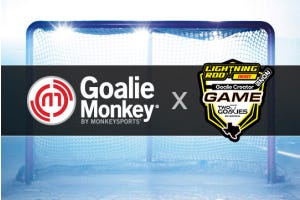
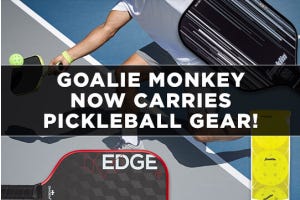
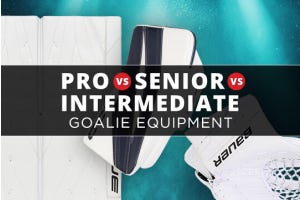

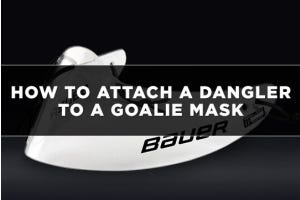



Login and Registration Form
or
Create an account